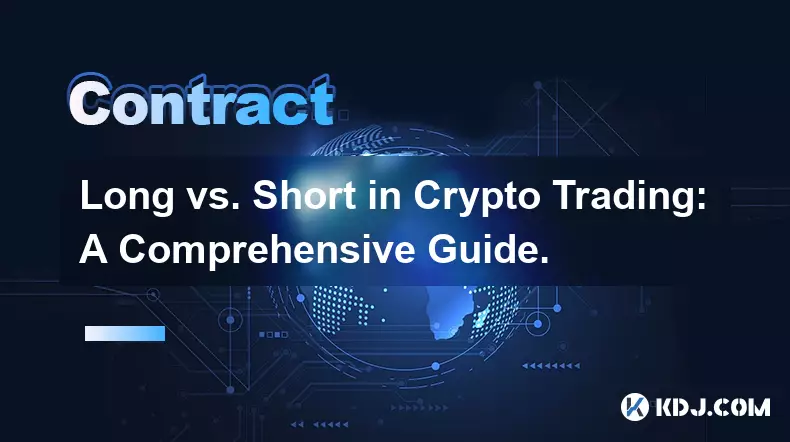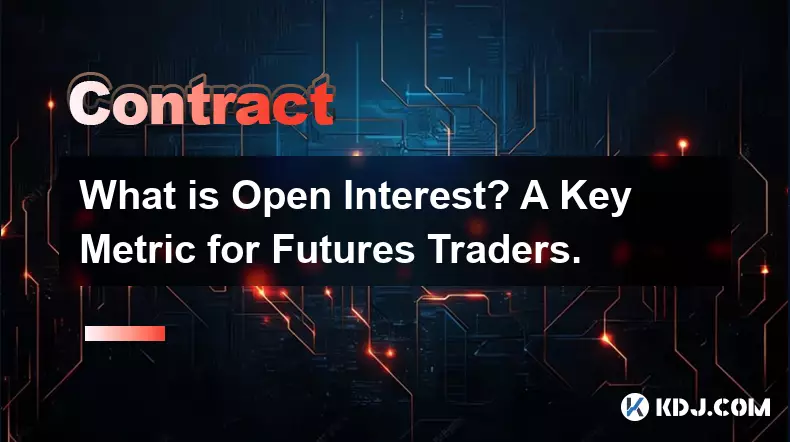-
 bitcoin
bitcoin $107015.826941 USD
-2.18% -
 ethereum
ethereum $3637.352324 USD
-5.18% -
 tether
tether $0.999831 USD
-0.02% -
 xrp
xrp $2.338078 USD
-6.23% -
 bnb
bnb $998.272150 USD
-6.97% -
 solana
solana $167.598257 USD
-10.12% -
 usd-coin
usd-coin $0.999863 USD
0.01% -
 tron
tron $0.282573 USD
-5.09% -
 dogecoin
dogecoin $0.169891 USD
-7.39% -
 cardano
cardano $0.557554 USD
-7.03% -
 hyperliquid
hyperliquid $39.914802 USD
-5.85% -
 chainlink
chainlink $15.414549 USD
-9.97% -
 bitcoin-cash
bitcoin-cash $510.361911 USD
-4.26% -
 ethena-usde
ethena-usde $0.999194 USD
-0.03% -
 stellar
stellar $0.282092 USD
-6.07%
What are the main advantages of trading Bitcoin contracts over spot Bitcoin?
Bitcoin contract trading offers leverage, short-selling, and hedging advantages, but requires careful risk management due to liquidation and funding rate risks.
Nov 04, 2025 at 11:00 pm

Main Advantages of Trading Bitcoin Contracts
1. Leverage allows traders to control a larger position with a smaller amount of capital. This means that even with limited funds, investors can gain exposure to significant price movements in Bitcoin. A leverage ratio of 10x or higher enables amplified returns when market predictions are accurate.
2. Short selling is seamlessly integrated into contract trading. Traders can profit from declining prices without owning the underlying asset. This flexibility provides strategic opportunities during bear markets, which spot trading does not support directly.
3. Capital efficiency is enhanced because margin requirements are lower than the full value of the position. Funds that would otherwise be locked in spot purchases can be allocated elsewhere, improving portfolio diversification and risk management.
4. Contract markets often exhibit higher liquidity compared to spot exchanges, especially for derivatives on major platforms. High liquidity reduces slippage and supports faster execution, critical for active trading strategies.
5. Hedging becomes more effective with futures and perpetual contracts. Investors holding physical Bitcoin can offset potential losses by taking short positions in contracts, protecting their portfolios against sudden downturns.
Enhanced Market Exposure and Flexibility
1. Perpetual contracts do not have an expiry date, allowing traders to maintain positions indefinitely as long as funding fees are managed. This offers greater flexibility over traditional futures, which require rollover before expiration.
2. Access to global pricing through standardized contracts minimizes regional arbitrage inefficiencies. Traders benefit from uniform pricing derived from major index feeds across multiple exchanges.
3. Advanced order types such as take-profit, stop-loss, and conditional triggers are widely supported in contract trading interfaces. These tools help automate risk control and improve trade precision.
4. The ability to go long or short with equal ease empowers traders to adapt quickly to changing market conditions. Sentiment shifts can be capitalized upon regardless of direction.
5. Institutional-grade infrastructure supports high-frequency and algorithmic trading on contract platforms, enabling sophisticated strategies that are difficult to execute in spot markets.
Risks and Considerations in Contract Trading
1. Leverage magnifies both gains and losses. A small adverse move can trigger liquidation if risk management protocols are not strictly followed. Position sizing and stop levels must be carefully calculated.
2. Funding rates in perpetual contracts can accumulate over time, eating into profits for long-term holders. Traders need to monitor these costs when maintaining extended positions.
3. Liquidation mechanisms vary across exchanges, and inadequate collateral can lead to abrupt closure of positions. Understanding the maintenance margin and insurance fund policies is essential.
4. Market manipulation risks are higher in less-regulated derivatives markets. Sudden price spikes or drops may trigger cascading liquidations, affecting overall stability.
5. Regulatory scrutiny on crypto derivatives is increasing globally. Jurisdictional restrictions may limit access or impose compliance burdens on traders using certain platforms.
Frequently Asked Questions
What is the difference between a futures contract and a perpetual contract? A futures contract has a fixed settlement date, while a perpetual contract does not expire. Perpetuals use a funding rate mechanism to keep their price aligned with the spot market.
Can I lose more than my initial margin in contract trading? On most reputable platforms, traders cannot lose more than their deposited margin due to automatic liquidation. However, in extreme volatility, gap risks may result in negative balances on some platforms without proper insurance mechanisms.
How do funding rates work in Bitcoin perpetual contracts? Funding rates are periodic payments exchanged between long and short positions. When longs dominate, they pay shorts to discourage excessive bullish bias, helping anchor the contract price to the underlying spot value.
Are Bitcoin contract trades taxed differently than spot trades? Tax treatment depends on jurisdiction. In many regions, contract trading is treated as speculative income or derivatives trading, potentially subjecting gains to different reporting rules than spot transactions involving asset disposal.
Disclaimer:info@kdj.com
The information provided is not trading advice. kdj.com does not assume any responsibility for any investments made based on the information provided in this article. Cryptocurrencies are highly volatile and it is highly recommended that you invest with caution after thorough research!
If you believe that the content used on this website infringes your copyright, please contact us immediately (info@kdj.com) and we will delete it promptly.
- Backend-for-Frontend, Token Theft, and Security: Navigating the Treacherous Waters of Modern Web Apps
- 2025-11-05 05:10:01
- Crypto Carnage: Bitcoin's $200B Wipeout – What's Next?
- 2025-11-05 04:30:16
- Sequans, Bitcoin, and Debt Reduction: A NYC Perspective on a Bold Move
- 2025-11-05 03:50:12
- XRP Price Wobbles: Death Cross Looms as Ripple Token Navigates Choppy Waters
- 2025-11-05 04:10:01
- Altcoins, Perpetual Tokens, and ETH Price: Navigating the Crypto Current
- 2025-11-05 03:55:01
- Tether's Triumph: $10 Billion Profits and a Treasury Milestone
- 2025-11-05 03:55:12
Related knowledge

Long vs. Short in Crypto Trading: A Comprehensive Guide.
Nov 04,2025 at 07:39pm
Understanding Long and Short Positions in Cryptocurrency Markets1. In crypto trading, taking a long position means buying a cryptocurrency with the ex...

The 2025 Guide to Profitable Crypto Futures and Derivatives Trading.
Nov 01,2025 at 07:39pm
Understanding Crypto Futures and Derivatives in 20251. Crypto futures are financial contracts obligating the buyer to purchase, or the seller to sell,...

Navigating a Bear Market: Shorting Strategies for Crypto Futures.
Nov 03,2025 at 07:18pm
Understanding Bear Market Dynamics in Crypto1. A bear market in the cryptocurrency space is characterized by prolonged price declines, often driven by...

What is Open Interest? A Key Metric for Futures Traders.
Nov 03,2025 at 11:18pm
Understanding Open Interest in Cryptocurrency Futures1. Open interest refers to the total number of active futures contracts that have not been settle...

How to Trade Crypto Futures on Bybit: A Complete Walkthrough.
Nov 04,2025 at 10:50pm
Setting Up Your Bybit Account for Futures Trading1. Visit the official Bybit website and click on the 'Sign Up' button to create a new account. Provid...

Identifying Support and Resistance Levels for Crypto Contract Trading.
Nov 04,2025 at 06:15pm
Understanding Support and Resistance in Crypto Markets1. Support and resistance levels are foundational concepts in technical analysis, especially wit...

Long vs. Short in Crypto Trading: A Comprehensive Guide.
Nov 04,2025 at 07:39pm
Understanding Long and Short Positions in Cryptocurrency Markets1. In crypto trading, taking a long position means buying a cryptocurrency with the ex...

The 2025 Guide to Profitable Crypto Futures and Derivatives Trading.
Nov 01,2025 at 07:39pm
Understanding Crypto Futures and Derivatives in 20251. Crypto futures are financial contracts obligating the buyer to purchase, or the seller to sell,...

Navigating a Bear Market: Shorting Strategies for Crypto Futures.
Nov 03,2025 at 07:18pm
Understanding Bear Market Dynamics in Crypto1. A bear market in the cryptocurrency space is characterized by prolonged price declines, often driven by...

What is Open Interest? A Key Metric for Futures Traders.
Nov 03,2025 at 11:18pm
Understanding Open Interest in Cryptocurrency Futures1. Open interest refers to the total number of active futures contracts that have not been settle...

How to Trade Crypto Futures on Bybit: A Complete Walkthrough.
Nov 04,2025 at 10:50pm
Setting Up Your Bybit Account for Futures Trading1. Visit the official Bybit website and click on the 'Sign Up' button to create a new account. Provid...

Identifying Support and Resistance Levels for Crypto Contract Trading.
Nov 04,2025 at 06:15pm
Understanding Support and Resistance in Crypto Markets1. Support and resistance levels are foundational concepts in technical analysis, especially wit...
See all articles










































































